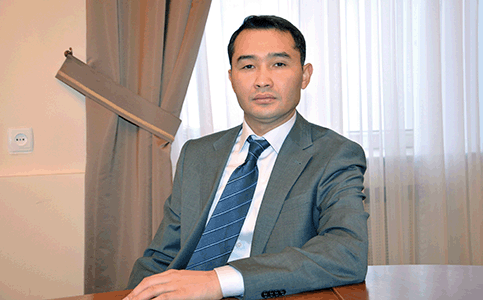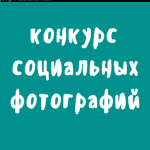Business development is a task of the regions
The economy of South-Kazakhstan region, recently considered a predominantly agrarian, now is hardly the most diversified in Kazakhstan. Built here manufacturing industry support system attracts a growing number of investors not only from abroad, but also from other regions of our country. The Deputy Akim of South Kazakhstan region Saparbek Tuyakbayev shared with us the secrets of success.
 Saparbek Kurakbayevich, how would you rate the performance of the economy of the South Kazakhstan region last year?
Saparbek Kurakbayevich, how would you rate the performance of the economy of the South Kazakhstan region last year?
Of course, the year turned out to be anything but simple. The world crisis, geopolitical instability, the continuing decline in commodity prices, a slowdown in trading activity and demand reduction, as well as the temporary loss of competitiveness due to the devaluation of the Russian ruble – all this has resulted in many of our producers being in a difficult situation. However, we have adjusted the tactical plans, took selective measures, and not a single enterprise in the SKR has suspended work. Moreover, in many sectors we finished the year with growth.
So, for example, the industrial production amounted to 668.4 bln tenge, which is 3.1% more than in 2014. Including the mining industry where this figure grew by 15.6% to 182.9 bln tenge, and in the manufacturing by 1.3% to 420.5 bln tenge.
In all fairness, I would like to note that the relatively slow pace in the manufacturing associated with temporary stoppage of Shymkent Oil Refinery for capital repairs, because of this the refinery processed 10% less of oil than a year earlier, or 500 thous. tons. And since the oil processing share of total industrial production of the region reaches 40%, this could have resulted in a 4% drop. But thanks to the new enterprises that joined the map of industrialisation we still finished with growth. In fact, without the oil refinery our manufacturing showed the dynamics at around 5%, which is one of the best in the country.
For example, our light industry have grown by 15%, the metalworking by 10.3%. The food industry and the building materials are developing fairly well. The gross agricultural output increased by 3.5%, the freight traffic by 6.3%. Meaning that the business activity continues.
This is evidenced by private investments as well, which according to the results of 2015 (on the background of the sequestration of the budget and reduction of the lending by the international financial organizations) rose by 18.2%. Moreover, the investments in the manufacturing sector reached 93.3 bln tenge, that 52.7% greater than in 2014. As a result, its share in total investments increased twofold – up to 22%.
What, in your opinion, has helped the region maintain stability and positive momentum?
Firstly, over the past 5–6 years, taking advantage of the favourable economic environment, we were able to provide a stable base of manufacturing growth, creating a completely new high-tech production. Even those large enterprises that remained in the SKR since the days of the Soviet Union – Chimpahrm, Kentau Transformer Plant, Shymkentmay and others, during the first five-year plan underwent a complete modernisation and now are equipped at the level of the best world standards.
It is clear that in time of a crisis it gives us additional advantages over the competitors. For example, it is far more difficult for Russian energy-intensive factories than for ours. They simply don't have the technological resources to reduce the costs and improve profitability.
The second factor is that we almost do not depend on selling of the raw materials: not from metals, not from oil or gas, not from grain. In other words, the economy of the SKR is extremely diversified. More than 60% is the manufacturing industry. A similar situation in the agriculture – we have no specialization in monoculture, like a grain, which the northern regions are facing historically.
The third point is the development of the SMEs, entrepreneurial spirit of our people. It's really a good cushion for the economy, especially in times of crisis. For example, in many regions now the decline in consumer demand by 20–30% is in contemplation. But let us say the small entrepreneur has two outlets, then even 50 per cent reduction will not kill his business. Yes, he will close one outlet, but still will be able to survive and make profit.
Thanks to all these factors, we have stable figures in general, and we look forward to a normal growth, even if in the next 2–3 years the main characteristics of the global economy will remain low.
In 2015 in the SKR 27 industrial objects were put into operation. Tell us about the most interesting ones.
Generally speaking, our region can rightly be called a leader in the implementation of the industrial-innovative development program. Thus, on the basis of the first five-year plan within the Map of industrialisation we have launched 137 objects into operation, for a total amount of 183.9 bln tenge, with the creation of 11.2 thous. new jobs (which is every fifth project in Kazakhstan). To date, 95% of these enterprises have utilised 90–100% of the planned capacity, which is the best figures in Kazakhstan. Just last year they have produced the goods amounting to 75.5 bln tenge, and this is 18% of the total volume of industrial production of the SKR.
The good rates remain in the second five-year plan – out of 120 enterprises placed into operation in Kazakhstan, 27 were opened in our region. Including 9 projects in the field of building materials, 7 in the food industry, 6 in the light industry, 2 in the machine building and metallurgy, as well as 1 in the chemical industry.
Among the most impressive and interesting examples I can point out the socks and hosiery manufacturing plant of Alem BT company, which was launched in the framework of the national bridge on the territory of the SEZ Ontustyk. This enterprise, which now employs 184 workers, can produce up to 16 million pairs of products per year. The project worth 2 bln tenge is implemented jointly with the Korean company Jintex Global and focused on 100% use of the local raw materials.
Another large investor from South Korea – transnational corporation Lotte has invested 3.2 bln tenge in the confectionery factory Rakhat-Shymkent LLP. Now here are launched 2 new lines for the production of wafers and biscuits with a total capacity of 9 thous. tons per year, and during the next stages the number of lines will be brought to 14, and they will be equipped with advanced automated European equipment.
In the past year in our region the first tractor plant has appeared, with a capacity of up to 5000 units per year and its own design bureau – KazKioti LLP. For the project execution 11.7 bln tenge was attracted, around 400 jobs were created. Together with the South Korean Dandong the plant produces tractors of the Kioti brand from 60 to 100 hp. Yes, our machines are slightly more expensive than most common Belarusian analogue – MTZ tractor, but it is 3 times more powerful and economical. Now the level of localization stands at 30%, and by the year 2017 it will be raised to 60%, that will make the products even more competitive. The project was implemented on time because in the next 3 years as part of program to establish a network of MTS for farmers, we will completely renew the tractor fleet in the region.
On the territory of the SEZ Ontustyk, for the needs of the Bal Textile LLP carpet factory, the carpet weaving polypropylene thread factory was launched, with the possibility of producing 4 000 tons of products per year. In prospect the enterprise, equipped with the modern equipment of Belgian, French and German producers, plans to bring capacity up to 8 000 tons with the consequent increase in jobs. The project attracted 1.7 bln tenge of investment. As a result, if before our weavers were forced to import yarn from Turkey, Bangladesh and Indonesia, now carpets of the South Kazakhstan production have 100% local content.
The good news is that the flow of investments is not stopping – in the past year alone the region was visited by more than 100 delegations from the United States, Italy, Germany, Hungary, Bulgaria, Poland, Canada, Turkey, Iran, South Korea, China and Japan. Based on the results of the business meetings, already 42 projects with foreign participation totalling $4.1 bln are being implemented in the SKR. The local entrepreneurs are also actively investing in creation of new enterprises. Moreover, in the last 2–3 years a growing interest in projects of the SKR is shown by the investors from other regions of Kazakhstan.
I am confident that thanks to the conditions created for business we will stay at the established pace. Already now within the Map of industrialisation for 2015–2019, 115 projects are approved from the SKR (every third in the Republic) worth 869 bln tenge, with the creation of 19.9 thous. new permanent jobs. About 50 more we are planning to include this year. Thus, until 2019 in the SKR around 30 enterprises will be launched annually – agree, it is a very good indicator.
As far as we know, the SKR stands out for its off standard solutions in terms of business support.
Indeed, we have accumulated a lot of know-how in this area. For example, back in 2012 were first in Kazakhstan to launch “single window” Entrepreneurs service centre, which completely accompanies investors and businessmen. Starting from the development of a business plan to putting the project into operation, including the recommendations for the financing and execution of the entire package of approval documents. Also business school and scientific-consulting centre for farmers are operating here. Furthermore, now the investment attracting centre Ontustyk Invest is being established in the region.
Perfectly demonstrated their abilities the regional investment centre Maximum and the microfinance organization Yrys, which lend to SMEs at a reduced interest rate of not more than 7%. Since its formation in 2009 they have already funded 11 647 projects worth 33 bln tenge. Starting this year we change the positioning of the RIC, now it will be a full-fledged bank at the local level, working independently from the budget and attracting financing on its own, including from international lending organizations.
The SEZ Ontustyk is successfully operating, where already 10 projects are implemented worth 25 bln tenge, and also 2 145 jobs are created.
In Shymkent, the work continues on the development of the transport and logistics centre of the SKR. Now on its territory 7 private investment projects on construction of modern “A” and “B” class warehouses are running, including freezers and vegetable storages covering total area of 230 thous. sq. m. Similar centres will work in the districts and cities of the region (Maktaaral, Turkestan, Saryagash).
Our stake on the development of industrial zones infrastructure as a key driver of the industrialisation of the region worked out. To date, we have created 11 industrial zones in almost all districts of the SKR, seven of which have already been fully given the infrastructure. In total they claimed 151 project worth 163 bln tenge, which involves the creation of 13 thous. permanent jobs. Already 50 enterprises have been launched, another 36 projects worth 20.1 bln tenge will be put into operation this year.
By the way, from 6.8 bln tenge of public funds spent on the infrastructure of the first IZ Ontustyk, 67% have already returned to the budget in the form of taxes and other payments from the enterprises operating on its territory. And according to the results of the current year, costs on its creation will be fully paid off.
Now this zone is already fully filled, that is why here in Shymkent in May of last year we started to build IZ Tassay (infrastructure costs – 1.2 bln tenge, claimed investments – 18 bln tenge), and in August – IZ Badam (2 bln and 60 bln respectively). The infrastructure is building very rapidly and very soon this work will be completed.
Other industrial zones are developing in all districts without exception. Some of our colleagues have criticised this approach, saying, why invest budget money to the industrialisation of remote regions, where there never was any industry? But we very carefully approached the elaboration of these projects. Before investing money we have studied the potential and identified the specialization of each zone based on available opportunities in the area. It turned out that even in such remote and poor for resources areas as Suzak or Kentau points of growth can be found. Yes, there are no raw materials that could be recycled, small population, but there are large consumers – Kazatomprom and Kentau Transformer Plant. Which means that it is possible to implement the cluster approach, through the maintenance and production of components for these enterprises.
In Turkestan we made a bet on the production of the construction materials because there is a high-quality raw materials, as well as the agricultural products processing. In Tulkubas district on the basis of an industrial zone we are creating apple cluster. And same for the each industrial zone. The formation of the industrial base will give an opportunity to each district to develop on its own, not depending on the regional budget.
For a long time we were thinking, experimenting on how to most effectively to manage and maintain these industrial zones, without cost to the budget. A year and a half ago under SEC Shymkent we have created the Managing company of industrial zones Ontustyk, ensuring its start-up capital for one year. Its main objective is to provide operational, engineering, administrative and utility, logistic, consulting and outsourcing services. With the growth of the number of active participants its activity will become more profitable. Already now the company is profiting and, according to our estimates, in 2–3 years will be able to earn up to $5 mln. This money will be spent on the expansion of existing and new zones, the search for new investors. In fact, we are launching an autonomous mechanism for continuing the industrialisation. Such things can’t be found anywhere else in Kazakhstan yet.
And how the industrialisation combines with the agricultural development in the SKR?
There is a direct relationship and multiplicative effect. After all, in addition to a plot of land with a ready infrastructure, investors are counting on a good raw material base, and in case of the food industry it means agricultural products. Therefore, when creating processing plants, in parallel we actively invest into increased output of our farmers. The investors get raw materials and farmers get guaranteed sales of their products.
Generally, if you take agriculture as a whole, in the past 2–3 years the significance of this industry has increased dramatically. The markets of Russia, China, Iran were opened. If we acquire at least 10% of their agricultural needs, it will be a tremendous boost to the development of the region. Iran alone is ready to buy up to 1 million tons of corn. Russia annually imports 2.18 mln tons of cucumbers and tomatoes valued at $1.3 bln.
That is why decided to apply the industrial approach here as well. For example, now the JSC NC SEC Shymkent implementing the investment project on creation of the agro-industrial zone “Greenhouse paradise”. The group of industrial greenhouses will allow to increase the commercial batches, which will make it possible to enter into futures contracts and assure the large amount delivery of up to 240–450 tons per day, or in value terms up to 14 bln tenge per year. Within the framework of the project the Akimat assigned a plot of land with the area of 136.3 hectares, located in close proximity to the logistics centre – Shymkent airport, Trans-Asian railway and “West Europe – West China” transit corridor.
In the Kazygurt district we are implementing the intensive horticulture development project. The concept provides for the establishment of the agro-zone “Intensive gardens” over the 1 800 hectares area, where the finished garden plots on a turnkey basis will be leased to the entrepreneurs. Currently we already received applications from business for 1 330 hectares. Thus, the viability of the project is confirmed by the demand from the potential investors.
In parallel we continue to develop small feedlots and commercial family dairy farms, attract the scientific provision of the industry, create rural cooperatives and a network of MTS. The agriculture is a huge and, most importantly, renewable resource. I am sure that in the future it will become another locomotive for the economy of the SKR.
You have mentioned the SEC Shymkent, but as far as we know, the socio-entrepreneurial corporations in Kazakhstan can’t boast about high performance...
We also thought for quite a while about what generally the SEC has to deal with. Directly create new enterprises? But this should be done by the private business. To credit? But the SEC is not a specialized financial organization, and we already have the RIC for this purpose. We have studied the experience of other regions, however, the work of the SEC faltered. This is largely due to the fact that they had to deal with implementation and the State program for housing and communal services, and the Employment strategy all at once. All this did not contribute to the normal development of the SEC. They simply were suffocating. We have convinced the appropriate officials and it already have been decided that these programs will be excluded from the area of responsibility of the SEC.
Now they will focus on the development of the entrepreneurship and the economy of the region in general. Sounds easy, but how to do it in practice? In the SKR we found the following solution. The JSC NC SEC Shymkent performs the functions of the holding management company, which includes the RIC, ESC, industrial zones managing company, transportation and logistics, tourist and agro-industrial zones. Controlling these structures, the SEC develops the points of business growth, defining the concept, objectives and strategies, forming a quality corporate and financial management. I think that in two or three years this large system will be able to work completely independently and effectively.
To what extant this experience can be applied in other regions?
Basically, now in the SKR we have a ready recipe and mechanism for the development of entrepreneurship, which can be easily duplicated. In the past year and a half this process already fluently took off. The structures, similar to the RIC, now are working in Kyzylorda and Atyrau, being created in other regions. Already three times the representatives of industrial zones from Aktobe and a number of other regions have visited us. The exchange of the experiences at the regional level on creation of the ESC is happening. Last year, the Ministry of national economy of the Republic of Kazakhstan organized a seminar in the SKR for all the SECs, so that they can learn our system of work.
Overall I believe that here the biggest activity should come from the regions themselves. We were given a budget, empowered, and we must look for the best ways to develop the business.
Saparbek Tuyakbayev
Was born in 1979, is a Bachelor in International Relations, Master of Humanities.
He began his career in 2005 as a Chief expert of the Division of control of statutory compliance in the field of public service of the Department of Civil Service Agency of the Republic of Kazakhstan on Civil Service Affairs. Between 2006–2012 he worked as the third Secretary of the Embassy of the Republic of Kazakhstan in the Russian Federation, the Head of the Division of coordination and monitoring of subordinate organizations activities of the Planning Department of the Ministry of Industry and Trade of the Republic of Kazakhstan, the Head of the Division of strategic planning of the Department of strategic planning and summary analysis of the Secretariat of the Ministry of Industry and Trade of the Republic of Kazakhstan, the Consultant of the Division of socio-economic monitoring of the Presidential Administration of the Republic of Kazakhstan, the Consultant of the Office of the President of the Republic of Kazakhstan, and the State Inspector of the Division of State control and organisational and territorial of work of the Administration of the President of the Republic of Kazakhstan. Since February 2012 is a Deputy Akim of the South Kazakhstan region.










